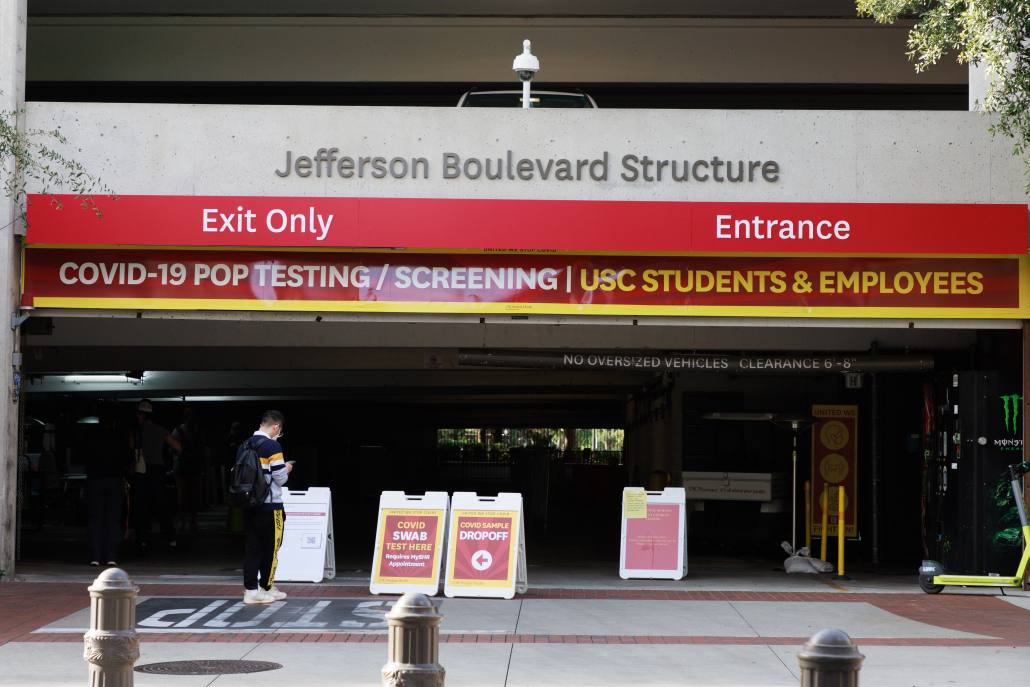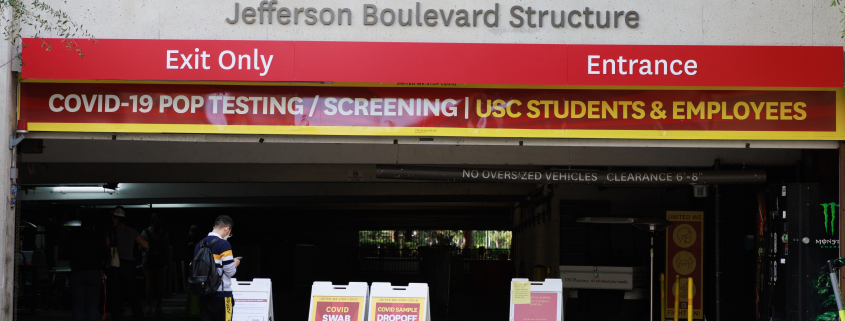Positivity rates remain around five percent

The coronavirus testing positivity rate was 5.7% among students and 4.7% among employees between Jan. 23 and Jan. 29, down from respective highs of 14.8% and 12.5% the week of Jan. 2. There were more total cases this last week than the week before, with 1728 total cases recorded last week, as a result of more students being on campus.
Monday was the deadline for eligible students to submit proof of their booster vaccine. As of Monday, 67% of graduate school students and 63% of undergraduate students reported their booster shots. Students who are not boosted will now be required to test twice a week to access campus and will possibly receive a registration hold.
“We think those numbers will start to start to pick up as more people submit their data now that the deadline has passed,” Chief Health Officer Sarah Van Orman said. “So where we are right now, we’re feeling very positive about the direction we’re heading in with [coronavirus] as we are moving out of this surge.”
If positivity levels continue to decrease, the University is hoping for the semester and current restrictions to begin to look more “normal.”
“We are really looking at, beginning of March, beginning of April, [if there will] be opportunities if things continue to improve here in USC and in the community to start to scale things back,” Van Orman said.
Students who live on campus and test positive must quarantine in hotels provided by the University, free of charge. The standard isolation period is 10 days from the date of a student’s positive test, however, students who are asymptomatic or exhibit few symptoms have the option to take an antigen test on their sixth day. If the antigen test is negative, students are allowed to leave quarantine early.
According to Van Orman, currently about half of the students choosing to take an antigen test are testing positive and must remain in quarantine. Students who leave quarantine early may still be infectious and are advised to take caution, wear a mask and avoid crowded spaces.
“We’re trying to determine what is that group of people that we think are much less likely to be contagious, so that they could get back to work to school sooner than the 10 days,” Van Orman said.
According to the University, when a student tests positive and needs a space to isolate, they can indicate if they need assistance in traveling to their designated location. The University Self Isolation Coordination Team “will then coordinate transportation.” Many students who have tested positive take ride-share vehicles to their quarantine location, entering the vehicle with non-consenting drivers.
The University works with the USC Hotel, as well as a few other hotels in the area, for student isolation spaces. As of Tuesday morning, 250 quarantine spaces were occupied and there were about 600 open spaces for students.
“As the surge sort of comes down, we should be fine with isolation spaces for the rest of the semester,” Van Orman said.
Currently, there are no plans by the University to stop providing free quarantine locations for students. According to Van Orman, if the coronavirus became endemic and more like influenza, it is possible there would no longer be a quarantine requirement. Any change in isolation requirements would follow a change in the county health officer’s quarantine orders.
There were some levels of short staffing at USC as a result of the omicron surge, Van Orman said. About two to three weeks ago, several USC units were experiencing loss of employees and difficulty carrying out jobs because of staff needing to quarantine. However, according to Van Orman, as cases have fallen at USC and in the community, staffing is improving. The University has been watching the issue “very closely” in case outbreaks occur in small units and cause a significant amount of staff to be on leave.
According to Van Orman, in order for the coronavirus to become endemic, there must be significant outbreaks without overwhelming the healthcare system or causing significant illness and morbidity among vulnerable populations. In addition, there cannot be new variants that cause severe disease, and more antivirals and therapeutic agents would need to be developed to treat people who are at high risk.
“I think we’re getting there. Most people believe that by the end of 2022 or sometime within 2022, we’re going to start treating this more like we might be treating other viral illnesses, provided we don’t have any huge surprises,” Van Orman said.
The online version of this article includes the exact positivity rates and case numbers from the past week, which are not included in print.

